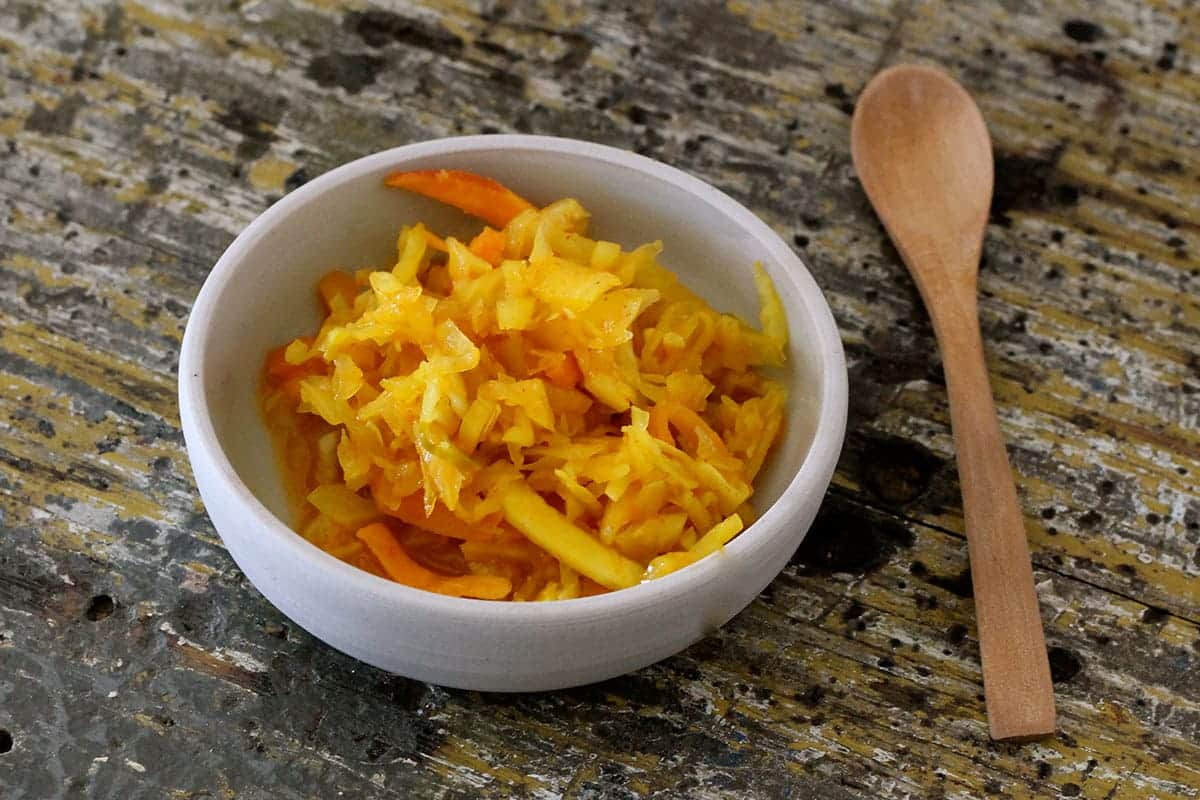
Kimchi is a spicy and tangy fermented food originating from Korea, where it is typically eaten with every meal, thus making it is a day-long family affair. Kimchi works well in fried rice, in spicy kimchi soup, or simply as a side dish. It is a great digestive aid to get the juices flowing before dinner. And, if you have never ventured into the world of fermented foods, Kimchi is a great place to start.
As I mentioned in yesterday’s post, fermented foods are a very important part of our diet and have been used in many cultures to preserve foods, aid digestion and promote the balance of health bacteria within the gut. Read more about the benefits of Fermented Foods here.
It is important to note that fermented foods (e.g. kimchi, sauerkraut) differ from cultured foods in that they ferment by way of bacteria naturally present in the food. Cultured foods (e.g. yoghurt, tempeh, kombucha) add bacteria and require a starter. Both fermented and cultured foods add ‘good’ bacteria to your digestive system, they just do so through differing processes.
With all this talk of bacteria, you’re probably wondering, “…am I going to get ill from this bacteria laden kimchi?” Let me assure you, it is only good bacteria we are talking about, and this recipe is completely safe. Keep it in the fridge once prepared though, ok?!
So, as promised, here is a delicious recipe for kimchi. Adapted from a book by Sandor Ellix Katz “Wild Fermentation”, this recipe was given to me by a delightful Gwinganna Naturopath, Sarah McKenzie, during my recent visit to the extraordinary lifestyle retreat. This is a great project to consider for the weekend as the recipe takes two days to complete.
You’ll need:
Sea Salt (or Celtic/Himalayan)
Half a large drum cabbage
12 radishes
2 carrots
1 onion
1 large chilli
1/2 bulb of garlic
3 tablespoons fresh ginger
Mix a brine of about 1 litre of filtered water and salt to taste (approximately 1 tablespoon). Taste as you go and add the salt gradually so as not to over salt. Stir to dissolve. The brine should be salty, yet palatable.
Coarsely chop the cabbage, slice the radishes and carrot (I like to use purple carrots). Let these vegetables soak in the brine overnight, covered with a plate to submerge. At this stage you may ad other vegetable if you so wish (seaweeds, green beans, beetroot etc).
The following day, prepare the herbs and spices. Grate the ginger, chop the garlic and onion, remove the seeds from the chilli and chop finely (or throw them in whole). Kimchi can absorb a lot of spice so go for it! Don’t worry to much about perfecting quantities.
Drain the vegetables that were soaking, and reserve the brine, If the vegetables taste too salty you can give them a quick rinse with cold water. If not salty enough, add more salt and give a good stir.
Mix the vegetables with the ginger/garlic/chilli/onion paste, then pack into clean glass jars (500ml or 1 litre). Pack tightly and press down on the vegetables until the brine rises. If necessary, add a little of the reserved brine to submerge the vegetables. If you chose to screw on the lid at this stage you may want to open it every few days in order to let out some pressure. Or you may chose to cover the top of the jar with a muslin cloth and affix with a rubber band.
Ferment in your kitchen or other warm place. Taste the kimchi every day. After about a week of fermentation, and when the mix tastes ‘ripe’, affix the lid and store in the fridge. Done! This recipe will keep for a couple of months, but let’s face it, it’s quite unlikely to last that long.
Speaking of gut health, if you’d like to know how to make your own coconut yoghurt at home, you can find the recipe in A Nourishing Morning. I was actually very surprised at how simple it was to make. Affordable too.
Source: theholisticingredient.com